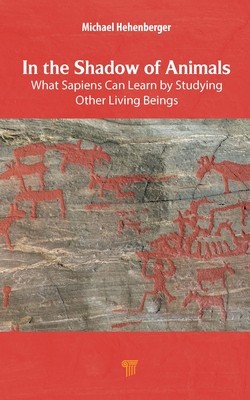
- We will send in 10–14 business days.
- Publisher: Jenny Stanford Publishing
- ISBN-10: 9815129414
- ISBN-13: 9789815129410
- Format: 15.2 x 22.9 x 2.2 cm, kieti viršeliai
- Language: English
- SAVE -10% with code: EXTRA
In the Shadow of Animals (e-book) (used book) | bookbook.eu
Reviews
Description
What differentiates humans from other living beings is our ability to communicate, our complex reasoning, and our use of skilled hands and smart brains to build houses, cities, and societies. We are able to learn. We penetrate into the unknown. We dominate our planet. For thousands of years, we have learned to live close to animals. By bending some species to our will, we now can drink their milk, eat their eggs and meat, use their fur, and employ their power to grow our crops. As we are gaining a more complete understanding of our physiology, we are observing that we are not so different from them and other life forms. By studying them, we can sharpen our senses, treat diseases, and overcome some of our weaknesses. By observing their unique capabilities, we invent ways to emulate their performances in areas where evolution has helped them excel. Animals have helped us build our human culture and civilization. We still take advantage of them, even push them back into ever more restricted habitats. We are now at risk to forget that Sapiens' only way to thrive, and planet Earth to survive, will be to humbly accept our place in the "shadow of animals."
This book explains how various animals have adapted to extreme conditions, and why humans need animals and should protect them. It helps to better understand "life on our planet" and the place of Homo sapiens among other living beings. It is a restructured version of the author's previous book Our Animal Connection and is more accessible for two reasons--streamlined and simplified text in all chapters and highly technical portions moved to Appendices A and B. Compared to the previous book, this book has several chapters enhanced and an added chapter on "octopus." Chapters that are presented in detail categorize animals in three ways--5 genetic and 4 biomedical model organisms that have been studied to understand their and human physiology; 9 animals that have been used to improve human health; 16 animals chosen for their exceptional capabilities and associated promise to have an impact on human performance. To the author's knowledge, there is no such other book in this field. It is a popular presentation of the human-animal relationship for young readers who are interested in science and the future of our planet. It is an easy read for high school and university students as well as provides materials that will stimulate scientific discussions, and hopefully, will develop respect for scientific facts.
EXTRA 10 % discount with code: EXTRA
The promotion ends in 21d.08:08:48
The discount code is valid when purchasing from 10 €. Discounts do not stack.
- Publisher: Jenny Stanford Publishing
- ISBN-10: 9815129414
- ISBN-13: 9789815129410
- Format: 15.2 x 22.9 x 2.2 cm, kieti viršeliai
- Language: English English
What differentiates humans from other living beings is our ability to communicate, our complex reasoning, and our use of skilled hands and smart brains to build houses, cities, and societies. We are able to learn. We penetrate into the unknown. We dominate our planet. For thousands of years, we have learned to live close to animals. By bending some species to our will, we now can drink their milk, eat their eggs and meat, use their fur, and employ their power to grow our crops. As we are gaining a more complete understanding of our physiology, we are observing that we are not so different from them and other life forms. By studying them, we can sharpen our senses, treat diseases, and overcome some of our weaknesses. By observing their unique capabilities, we invent ways to emulate their performances in areas where evolution has helped them excel. Animals have helped us build our human culture and civilization. We still take advantage of them, even push them back into ever more restricted habitats. We are now at risk to forget that Sapiens' only way to thrive, and planet Earth to survive, will be to humbly accept our place in the "shadow of animals."
This book explains how various animals have adapted to extreme conditions, and why humans need animals and should protect them. It helps to better understand "life on our planet" and the place of Homo sapiens among other living beings. It is a restructured version of the author's previous book Our Animal Connection and is more accessible for two reasons--streamlined and simplified text in all chapters and highly technical portions moved to Appendices A and B. Compared to the previous book, this book has several chapters enhanced and an added chapter on "octopus." Chapters that are presented in detail categorize animals in three ways--5 genetic and 4 biomedical model organisms that have been studied to understand their and human physiology; 9 animals that have been used to improve human health; 16 animals chosen for their exceptional capabilities and associated promise to have an impact on human performance. To the author's knowledge, there is no such other book in this field. It is a popular presentation of the human-animal relationship for young readers who are interested in science and the future of our planet. It is an easy read for high school and university students as well as provides materials that will stimulate scientific discussions, and hopefully, will develop respect for scientific facts.


Reviews